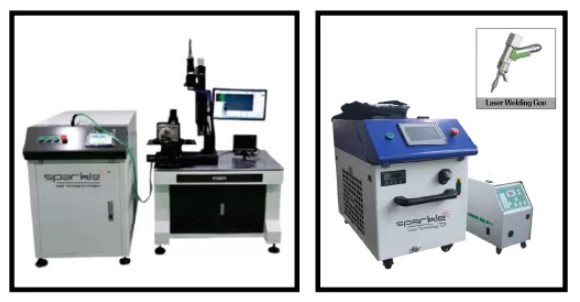As industries continue to push the boundaries of innovation, the demand for advanced manufacturing technologies has never been greater. One such technology that has gained significant traction is the fiber laser welding machines. Known for its precision and efficiency, fiber laser welding is reshaping how industries approach welding tasks, offering a host of benefits that traditional methods cannot match.
What Sets Fiber Laser Welding Machines Apart?
Fiber laser welding machines utilize a fiber optic laser to produce a high-intensity beam capable of welding materials with extreme precision. Unlike conventional welding techniques that rely on heat from an electric arc or gas flame, fiber laser welding directs energy precisely where it’s needed, resulting in cleaner, stronger welds.
Key Advantages of Fiber Laser Welding Machines
Exceptional Speed and Accuracy
Fiber laser welding machines are incredibly fast, completing welds in a fraction of the time compared to traditional methods. This speed does not come at the expense of accuracy; the laser’s precision ensures that even the most intricate welds are executed flawlessly, making it ideal for high-precision industries.
Enhanced Material Compatibility
These machines are versatile enough to weld a wide array of materials, including various metals and alloys. Whether you’re working with stainless steel, aluminum, copper, or titanium, fiber laser welding can handle the job with ease, offering strong, durable welds that meet industry standards.
Reduced Thermal Distortion
One of the significant challenges in welding is managing heat distortion, which can compromise the integrity of the materials being welded. Fiber laser welding minimizes this risk by focusing heat on a very narrow area, reducing the thermal distortion and preserving the original properties of the materials.
Eco-Friendly Welding Solution
Fiber laser welding is an environmentally friendly option due to its energy efficiency and reduced need for consumables like welding rods or gases. The process itself generates minimal waste, contributing to more sustainable manufacturing practices.
Ease of Automation
The adaptability of fiber laser welding machines makes them perfect for automated production lines. Their ability to be integrated with robotic systems allows for continuous, high-speed production with minimal human intervention, leading to lower labor costs and increased throughput.
Diverse Applications Across Industries
Fiber laser welding machines are revolutionizing various sectors by providing reliable and efficient welding solutions:
- Aerospace: Critical for welding high-strength, lightweight components that require precise joints.
- Automotive: Used extensively for welding car parts, including batteries, sensors, and structural components, where strength and durability are paramount.
- Electronics: Essential for micro-welding tasks, such as assembling circuit boards, connectors, and other delicate components.
- Jewelry: Provides the fine control needed for intricate designs and delicate metalwork.
Innovations on the Horizon
The future of fiber laser welding is bright, with ongoing research and development focusing on further enhancing this technology:
Hybrid Welding Systems: Combining fiber laser welding with other welding techniques to achieve superior results for specialized applications.
Real-Time Process Monitoring: Advanced sensors and AI-driven systems that provide real-time feedback during the welding process, ensuring perfect welds every time.
Portable Fiber Laser Welding Machines: Development of compact, portable units for on-site welding in remote or challenging environments.
Conclusion
Fiber laser welding machines represent a significant leap forward in welding technology, offering unmatched precision, speed, and versatility. As industries continue to demand higher standards of quality and efficiency, fiber laser welding will undoubtedly play a crucial role in meeting these expectations.
By investing in fiber laser welding technology, manufacturers can ensure they remain at the forefront of innovation, delivering superior products while optimizing production processes. The future of welding is here, and it’s powered by fiber lasers.





Comments